Gods and demons in Angkor
Table of Contents
- Mekong Expedition 2008
- From China with love
- Keeping my cool in Kuala Lumpur
- Temple-bagging in Thailand
- Crossing the line in Mae Sai
- Disco days in Myanmar
- Through Thailand to the Mekong
- Drinking Beerlao in Laos
- Taking the slow boat
- Riding elephants in Luang Prabang
- Seeking the truth at the Plain of Jars
- Mini-monks in Vientiane
- Exploring the South in Laos
- Swimming in a volcano in Ratakaniri
- Parks and prisons in Phnom Penh
- Gods and demons in Angkor
- Floating away in Vietnam
- Reaching paradise in Phu Quoc
While Phnom Penh is its country's largest city, Phnom Penh International Airport is not the busiest airport in Cambodia. As I learnt from my neighbour on the bus who was in the airline business, that title belongs to Siem Reap Airport. Siem Reap would seem an odd location for so many visitors: its a pretty forgettable town, but it is of course the gateway for most tourists heading for the amazing temples of Angkor.
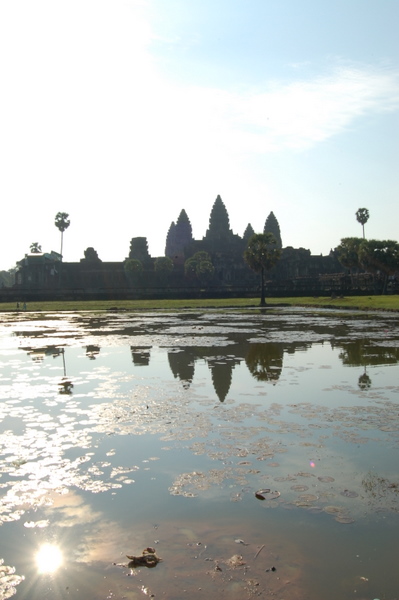
The obligatory Angkor Wat shot
The scale and sheer number of these buildings is immense. Angkor Thom, for example, is 12km around its walls. It contains the astonishing Bayon, a temple where hundreds of gargantuan faces gaze down at you serenely.
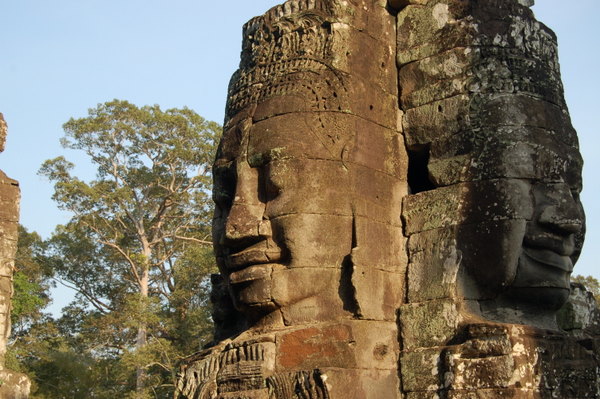
The Bayon
There is Angkor Wat, with its huge moat, famous towers and over 1000 square metres of bas-reliefs depicting Hindu myths. There is Ta Phrom where trees literally eat the temple alive. There are hundreds of smaller temples and shrines. I could go on, but there are plenty of dazzling coffee table books on the subject already. Just come and pretend to be Indiana Jones or Lara Croft and explore these lost temples.
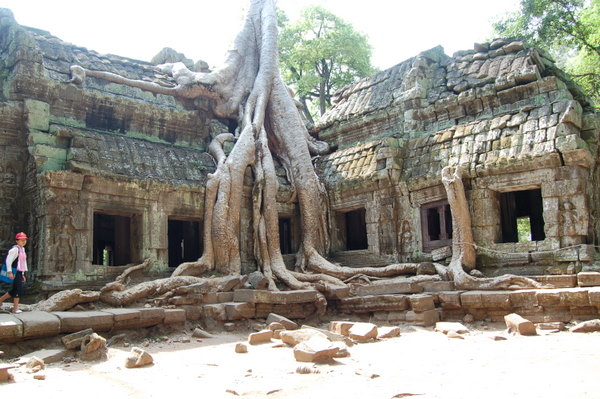
Ta Prohm eaten alive by trees
One day I took a car out to Beng Mealea, 80km north of Siam Reap. This temple really did have an abandoned feel. I went clambering through broken archways, over massive block of stone, occasionally stumbling on a lintel still covered with intricate carvings. Of course the local kids were better practiced than me, happily leaping over giant drops without a care in the world.
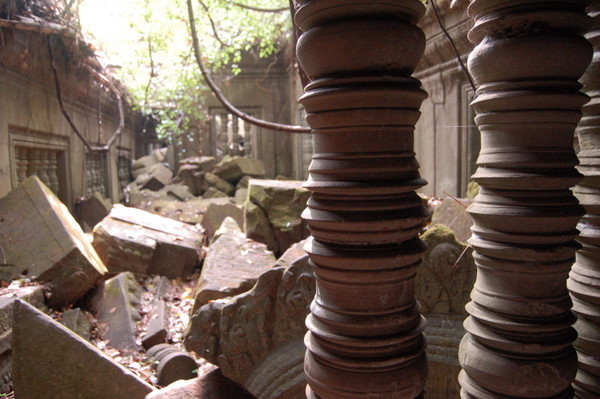
Beng Mealea
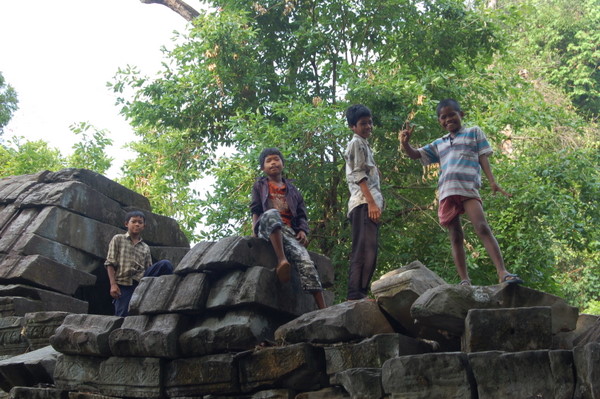
Local kids
Angkor was exhilarating, motorbike zooming through the south gate of Angkor Thom, lines of giant stone demons and gods flanking the path. This was one of the scenes depicted in the bas-reliefs at Angkor Wat: the Churning of the Sea of Milk. The gods and demons agreed to collaborate by using a giant snake to churn the primordial sea of milk for 4000 years to make ambrosia.
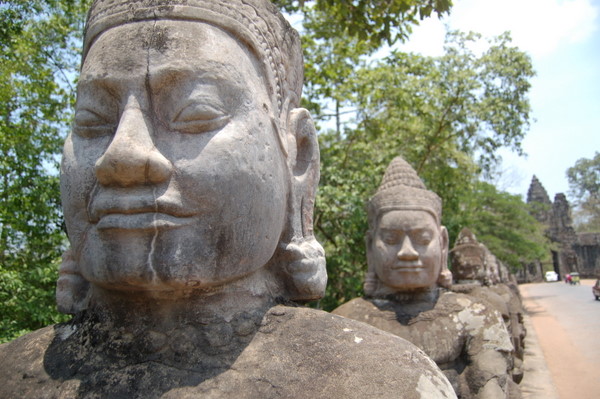
Gods at the south gate to Angkor Thom
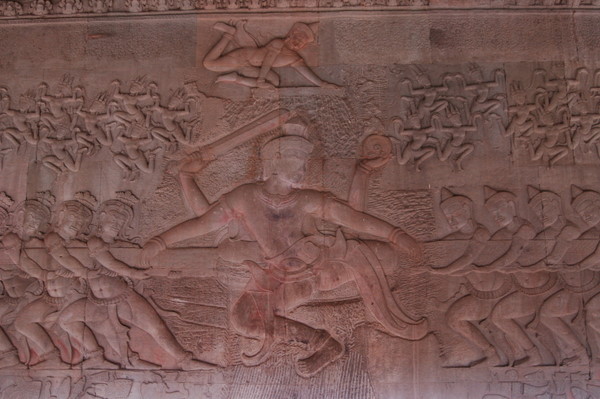
Churning of the Sea of Milk
Read the next entry: Floating away in Vietnam
